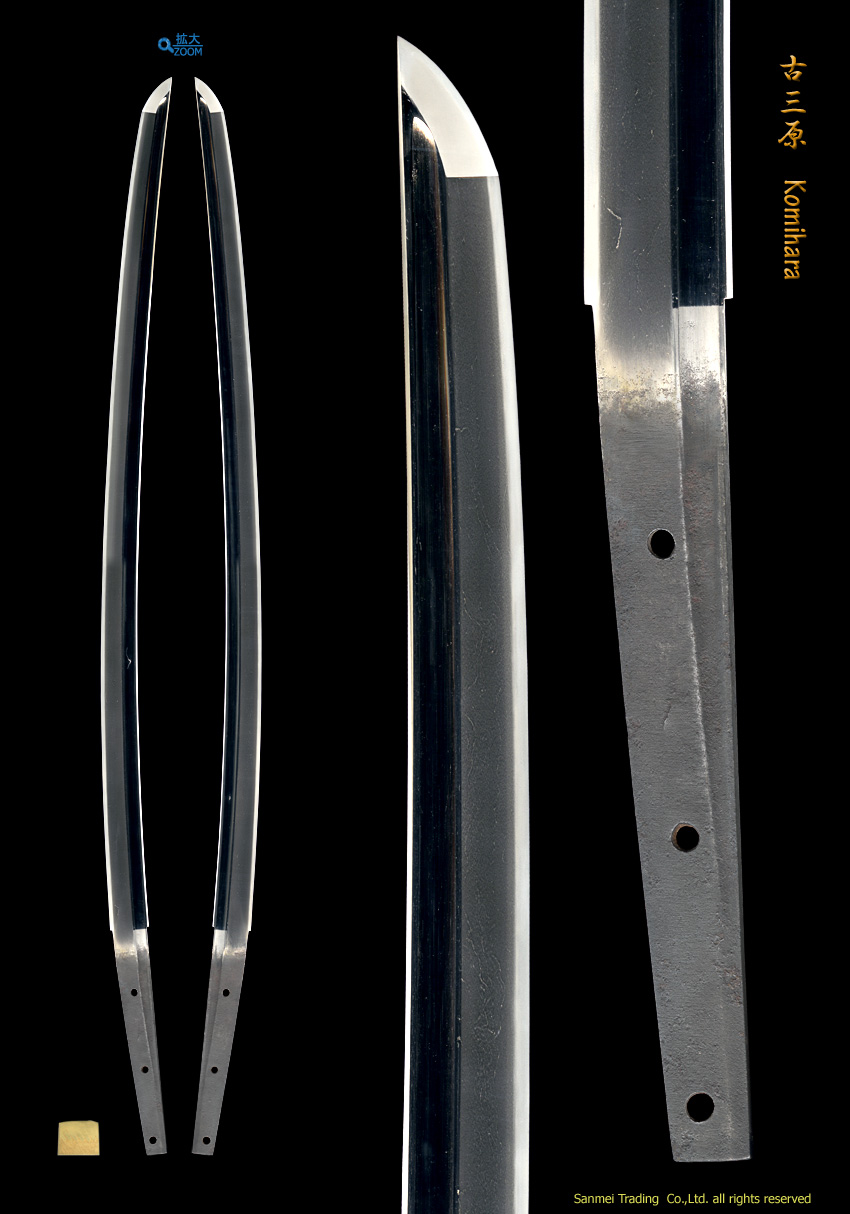Length of cutting edge 71.2cm Curvature 1.8cm Width of base 32.5mm Width of Yokote 21.5mm Thickness of base 6.8mm
Forging pattern (kitae hada) : Kitae hada is fine Mokume hada mixing in with partial Itame-hada, quench side shows conspicuous flowing hada ware. The entire hiraji is covered in fine Ji-nie (hard metal granules over the surface) with delicate Chikei (darkish Nie lines) like fine meshwork activity. Entire Hiraji surface shows misty, sparkling Utsuri reflection.
Tempering pattern (hamon) : Hamon is fine Nie based Chu-Suguha. The Nioi-kuchi is relatively tight and bright. Delicate ASHI frequently works in the interior which is filled with deep misty-Nioi. Upper the blade, deeper and stronger the Nie granules of "Hotsure" fray and "N-ju Ha" double quench activity which is vividly bright.
Temper of tip (boshi) : Temper of tip is fairly tight Nioi based, small circle turns back gently with "Hakikake" brush up indication.
Tang (Nakago) : Nakago is SURIAGE substantially shortened to be unsigned. Horizontal heel shape. Three Mekugi-ana peg holes. KIRI (horizontal) file marks.
Mihara in Bingo province, where had produced the renowned fine steel since Kamakura period, was strongly influenced by the powerful shrines in central Yamato, therefore Mihara sword makers had followed the typical technique of Yamato school.
Those works from end Kamakura to Nanbokucho period is called "Ko-Mihara" 古三原 and the name of works during Muromachi period is "Mihara" 三原.
The subject heroic katana is identified as a work of Ko-Mihara 古三原 school that would be MASAIE 正家 or MASAHIRO 正広. The entire blade still remains wide in Mihaba and stands firmly on base leading to the medium Kissaki that shows the major character of Nanbokucho, 14th century. Also it shows an profound features such as Hotsure fray or Ni-ju-ha double temper indication of Yamato school and radiates misty Utsuri reflection standing out on Hiraji surface. This prominent katana has been treasured by powerful legitimate Samurais in generations and still remains amazing excellent condition over the 650 years.
Shakudo ground gold foiled Habaki collar, preserved in a Shira-saya plain wood mounting.
Fresh polish/Condition scale: excellent-very good (using a scale of mint-excellent-very good-good-fair-poor)

